Depends on 2 factors, the room and your preference. The better your room the more omni you can get away with without coloring the sound. Is your preference Imaging the instruments in there place, which usually adds detail, or do you prefer a more enveloped less specific imaging. You can achieve either with either kind of speaker but its easier to get the latter with omnis. And just FYI in 30 years working in recording studios I never saw a pair of omnis.
I got thoroughly interested in the omni sound. Wondered if it worked:
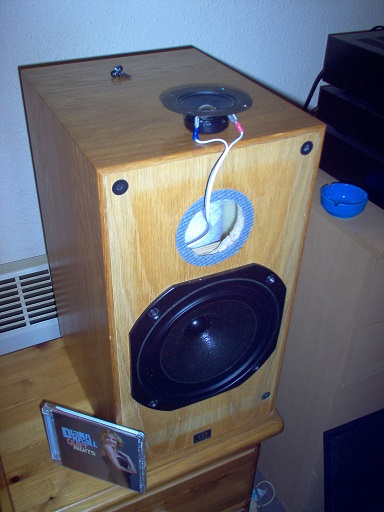
Surprisingly good.
But I did a little trick in making the crossover what is called Third order Butterworth or BW3:
Works like this on phase:
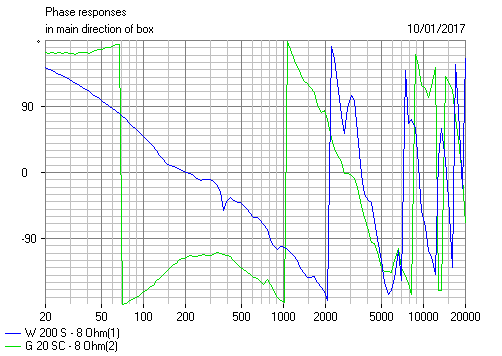
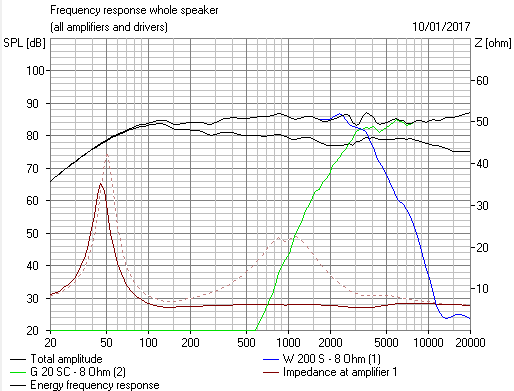
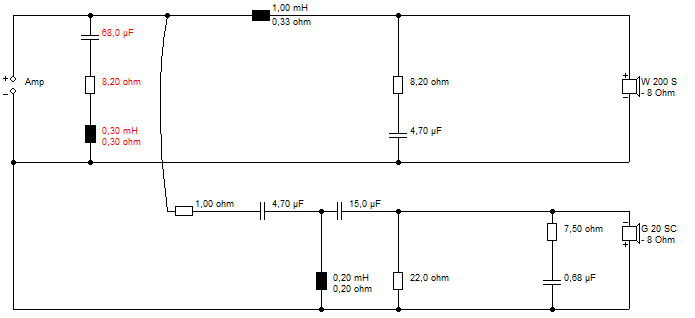
You model it like it is flat baffle. The idea is 90 degree phase fills the power hole that you get with exact phase aligned. So sounds natural.
Flat Impedance and Flat Power response design.
All experimental, but I've always liked BW3. It was a standard at the BBC years ago. But I had this intuition that maybe 90 degree phase meant you should turn the tweeter 90 degrees. Who knows?
Roy Allsion played with similar ideas, here a Model 6, the idea is the woofer is close to the wall:
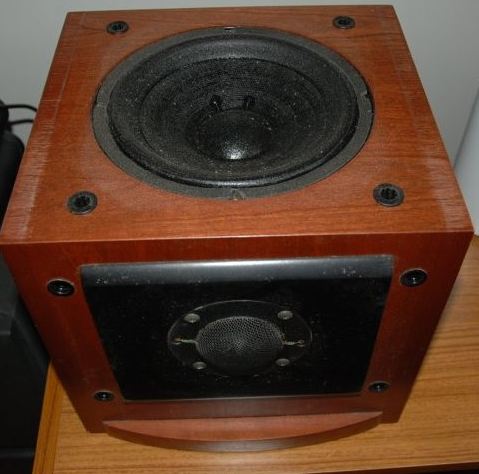

Surprisingly good.
But I did a little trick in making the crossover what is called Third order Butterworth or BW3:
Works like this on phase:
You model it like it is flat baffle. The idea is 90 degree phase fills the power hole that you get with exact phase aligned. So sounds natural.
Flat Impedance and Flat Power response design.
All experimental, but I've always liked BW3. It was a standard at the BBC years ago. But I had this intuition that maybe 90 degree phase meant you should turn the tweeter 90 degrees. Who knows?
Roy Allsion played with similar ideas, here a Model 6, the idea is the woofer is close to the wall:
Last edited:
Depends on 2 factors, the room and your preference. The better your room the more omni you can get away with without coloring the sound. Is your preference Imaging the instruments in there place, which usually adds detail, or do you prefer a more enveloped less specific imaging. You can achieve either with either kind of speaker but its easier to get the latter with omnis. And just FYI in 30 years working in recording studios I never saw a pair of omnis.
Totally wrong, please read my earlier post. Speakers with directivity control all have freaky frequency responses outside the listening bundle. In a bad room, these get reflected and will impact timbre. So a speaker with directivity control needs to be played in a well treated room, or they will colour sound. An omni which behaves well off axis (otherwise it would not be an omni) will not be bothered by reflections as much.
In this thread loudspeaker contruction, directivity and postioning choices get mixed with psychoacoustics in small rooms.
Most "normal loudspeakers have more or less directivity above 600Hz. If this speaker is put pointing up, frequency response at spot deteriorates because of loosing high frequencies spl. Reflected energy proportion gets higher and gives more "space".
An omni or dipole speaker is designed to give more uniform response in various directions and retain spectral balance (better). However this is very difficult to achieve and still positioning and reflectiveness spectrum of walls have a role.
Personally I prefer dipole or omni speakers, but I'm alone with that among my hifi friends! .
Most "normal loudspeakers have more or less directivity above 600Hz. If this speaker is put pointing up, frequency response at spot deteriorates because of loosing high frequencies spl. Reflected energy proportion gets higher and gives more "space".
An omni or dipole speaker is designed to give more uniform response in various directions and retain spectral balance (better). However this is very difficult to achieve and still positioning and reflectiveness spectrum of walls have a role.
Personally I prefer dipole or omni speakers, but I'm alone with that among my hifi friends! .
This page, written by one of the Beolab lead technicians Geoff Martin shows just how omni the Beolab90 really is: B&O Tech: Intuitive Directivity Plots – earfluff and eyecandy
Omni:
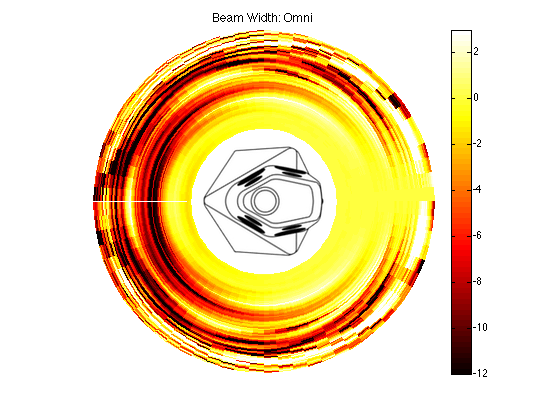
If you ask me, more care was put in achieving the narrow and wide beam width modes...
Narrow:
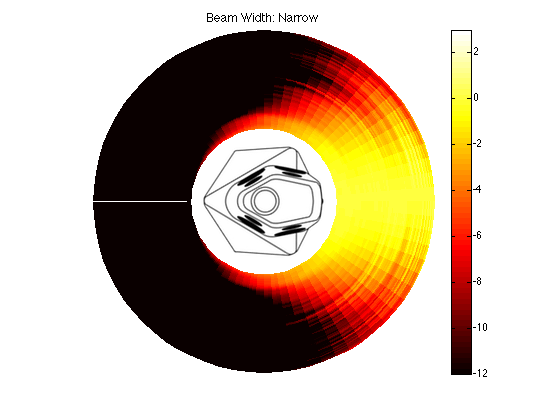
Wide:
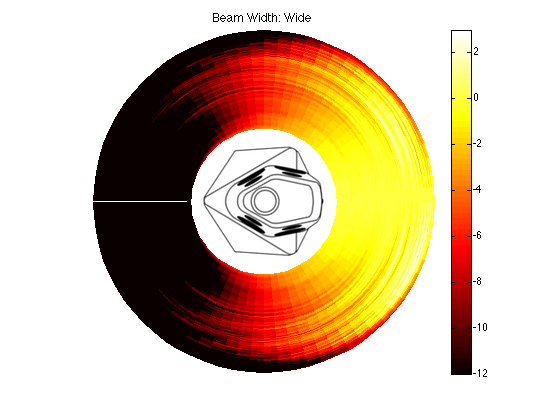
If you look at where the frequency bands are represented:

The omni mode seems more of an afterthought than a design goal.
Based on this graph:
I'd say MBL may certainly use the word omni.
Last edited:
In my limited experience, omnidirectional speakers (which are easy to build) work really well in small rooms and lower listening volume. One of the most interesting designs I tried is the MDD speaker (my prototype is here My 34c9 (omnidirectional full range with 3FE22) build, V2 is using 3D printed bottom part). It has a very even frequency response across the room, although it is using diffraction, which some people seem not to like. Also, back-to-back standard tower speakers placed near to a corner and listened on a diagonal also create the speaker disappearing effect. A similar effect can be created by nearfield listening in a "giant headphones" arrangement with my KEF iQ3 coaxials - but that works only for one position - I use that arrangement at my computer workspace. My quest is to have "disappearing speakers" - and that I can now do in my smaller working room. Large controlled directivity horn system is a work in progress in my basement room. That would be impractical for any room not fully dedicated to audio. That being said, I mostly listen to pot-panned music - rock, metal, electronic with some acoustic music in the mix as well. Even for that type of music, disappearing speakers are the most enjoyable for me. I used to have a small radio/MP3 player, which had small FR speakers on the sides and a larger woofer in the front, maybe even some DSP in it. It was great for background music, but it was not too good louder. And that was one of the things that got me into single box stereo/omnidirectional speakers.
^^
I've been pondering about this for sometime. When we are young, this is not much of a problem, but when we are getting old, it is. The fact that ears have different hearing starts to matter.
I still listen to live concerts with the same ears I use to hear my speakers
I want them to sound similar or if possible close to the same, for these ears. I use measurements to guide me in that process.
I have 50 drivers facing me, yet the speakers disappear. There's always more than one way.
Lower diffraction as much as possible, absorb early reflections and create late (within Haas) reflections from lateral direction. I want the feel to be "there". Wherever "there" is as it is mixed. That's the goal and being in control what speakers one chooses and how they play with the room, it is achievable and a fun project to work on. A satisfying hobby mixing all I'd like to keep myself busy.
+1 on the concerts coming back! I do miss it...
+1 on the concerts coming back! I do miss it...
Thanks... it is a stone house with false walls (with a bit of isolation between) on the inside of the outer walls.
We just finished re-doing the lot. The speakers will be placed in the same positions again, but are currently in a maintenance phase, getting some frequency dependent filters. The jury is still out if that's going to be an upgrade, the numbers say it will be. It is reversible if it doesn't work out.
Half way, you're a fast reader (lol).
We just finished re-doing the lot. The speakers will be placed in the same positions again, but are currently in a maintenance phase, getting some frequency dependent filters. The jury is still out if that's going to be an upgrade, the numbers say it will be. It is reversible if it doesn't work out.
Half way, you're a fast reader (lol).
- Status
- This old topic is closed. If you want to reopen this topic, contact a moderator using the "Report Post" button.
- Home
- Loudspeakers
- Multi-Way
- How you hear your speakers, are they omnidirectional?